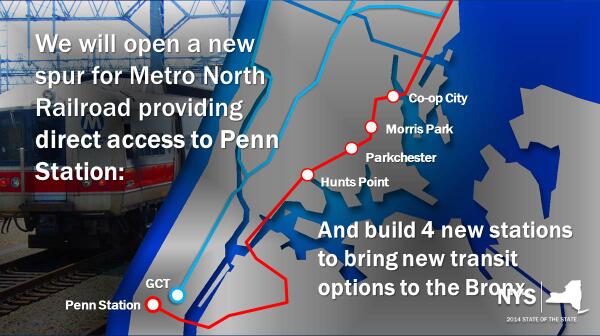 It’s a new year, but it’s the same podcast. Welcome to the 11th episode of “The Next Stop Is…” the one and only audio version of Second Ave. Sagas.
It’s a new year, but it’s the same podcast. Welcome to the 11th episode of “The Next Stop Is…” the one and only audio version of Second Ave. Sagas.
While a lot has happened over the past few days — a Metro-North resignation, Chris Christie’s George Washington Bridge scandal — Eric and I recorded this episode on Sunday night. The discussion, however, is still timely. We talk about how even the promise of transit drives real estate prices issues with the environmental review process, and subway collision numbers for 2013. I also give my pick for the most important transit development of 2013. What is it? You’ll just have to listen.
This week’s recording again runs just under 25 minutes, and it is, as you may have guessed by now, the perfect length for your subway ride home this evening. You can grab the podcast right here on iTunes or pull the raw MP3 file. If you enjoy what you hear, subscribe to updates on iTunes as well and consider leaving us a review.
Podcast: Play in new window | Download
Subscribe: RSS



 With Vice President Joe Biden in tow — one of the key players behind the federal dollars New York has used in its recovery from Sandy — I’d hope that Gov. Andrew Cuomo would have more to say about construction efforts than what we already know. Perhaps he’d elaborate on how the state and MTA plan to shore up a 100-year-old system that’s underground in some of the city’s more vulnerable areas. Perhaps he’d talk about how the MTA will protect trains, yards and tunnels. Or perhaps, with nearly a full term under his belt, he’d just reiterate what we already know.
With Vice President Joe Biden in tow — one of the key players behind the federal dollars New York has used in its recovery from Sandy — I’d hope that Gov. Andrew Cuomo would have more to say about construction efforts than what we already know. Perhaps he’d elaborate on how the state and MTA plan to shore up a 100-year-old system that’s underground in some of the city’s more vulnerable areas. Perhaps he’d talk about how the MTA will protect trains, yards and tunnels. Or perhaps, with nearly a full term under his belt, he’d just reiterate what we already know. It’s been a rough 12 months for Metro-North. Headlined by December’s fatal derailment near Spuyten Duyvil, the commuter railroad faced power problems over this fall and a series of high-profile collisions and derailments earlier in 2013. Now, according to a report in The Times, Metro-North President Howard Permut will
It’s been a rough 12 months for Metro-North. Headlined by December’s fatal derailment near Spuyten Duyvil, the commuter railroad faced power problems over this fall and a series of high-profile collisions and derailments earlier in 2013. Now, according to a report in The Times, Metro-North President Howard Permut will 